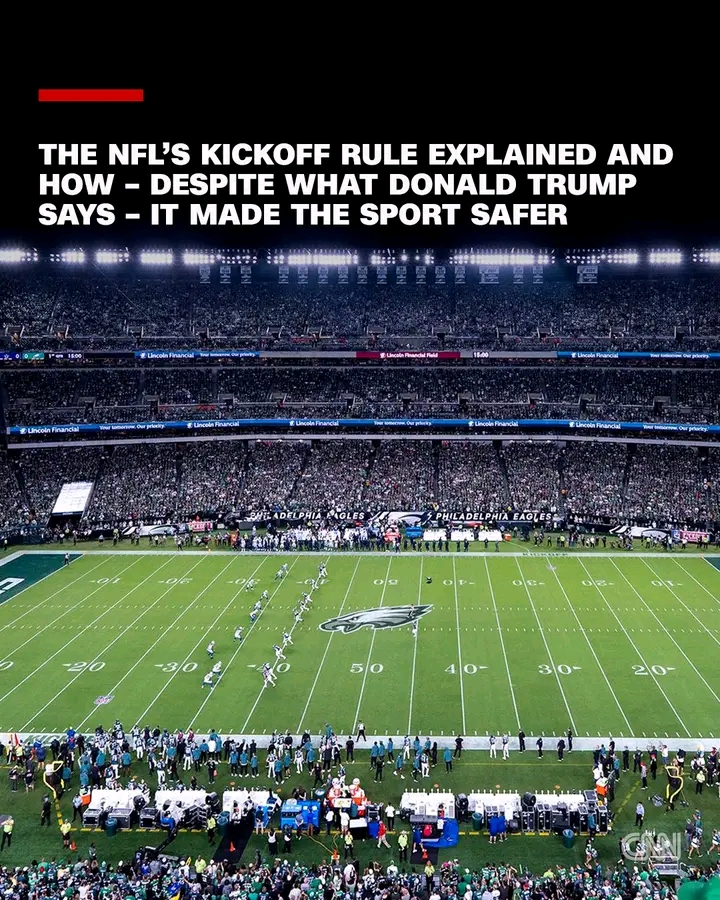With the new NFL season now in full flow, fans are still getting used to some of the changes in the sport.
Maybe the biggest change in recent years is the new dynamic kickoff rule, which was brought in last season but was made permanent before this campaign.
While the NFL is happy with the new format and has evidence that it has made players safer, it appears not everyone is comfortable with the new rule.Chief among those critics has been President Donald Trump, who posted his thoughts on Truth Social Monday, urging the NFL to get rid of that “ridiculous looking” rule and saying it was “at least as dangerous” as the old version of kickoffs despite what the NFL statistics say.
But how have kickoffs changed and what has been the outcome?
What is the new rule?
Under the old rules, the kicking team started at their 35-yard line and tried to kick the ball as far downfield as possible to give their defense a better chance of stopping the offense far from the end zone. Meanwhile, the receiving team tries to move the ball as far as they can up the field. With two teams running at each other at top speed, collisions between players were often devastating.The new version still sees the ball kicked from the kicking team’s 35-yard line, but every player on the kicking team other than the kicker themself now lines up with at least one foot on the returning team’s 40-yard line.
Players must also wait to move until the ball hits the ground or is touched by a returner inside the 20-yard line.
Any kick that is caught or lands in the landing zone must be returned, while any kick that falls short of the landing zone will be ruled a touchback and spotted at the returning team’s 40-yard line.
If a kick hits the landing zone and then goes into the end zone, it has to be returned or downed by the receiving team.Among other things, it basically means players are closer together and are not colliding into each other with as much speed.
Are kickoffs now safer?
In short, yes.
“We’re glad to see continued focus on these injuries pay off, and as always, will be using this injury data to inform and further strengthen our injury prevention and reduction approach during the offseason,” Dr. Allen Sills, NFL chief medical officer, said in a statement.





























